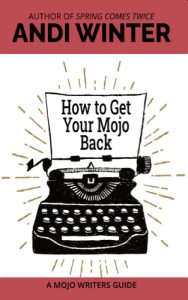 One of the incredible, surprising, wonderful things to come out of the pandemic* was the “Short Story a Week” writing challenge I had with a fellow writer. Over the course of eighteen months, I wrote 57 short stories (including nine novellas** and most of a novel), which was a wonderful way to escape reality and at the same time feel like I was accomplishing something.
One of the incredible, surprising, wonderful things to come out of the pandemic* was the “Short Story a Week” writing challenge I had with a fellow writer. Over the course of eighteen months, I wrote 57 short stories (including nine novellas** and most of a novel), which was a wonderful way to escape reality and at the same time feel like I was accomplishing something.
After 18 months of writing a story a week, I was convinced that I had a neverending Font (fount?) of Creativity. A fire hose of innovation that could not be quenched. A veritable endless supply of ideas, and the energy to bring them forth into the world.
And then I hit The Wall.
All of my energy was shot, ideas refused to bubble up, and I found myself in the Desert of the Real.*** Suddenly the fun and joy of writing became a torturous slog. Totally Un-fun.
Which was when I knew I had to do something.
So in a quest to recover my mojo, I researched. I read books, listened to podcasts, scanned the internet**** and used myself as a guinea pig to test the theories and activities I came across. Some worked, some didn’t.
Throughout it all, I found a path that worked for me. And I figured that if it could work for me, maybe it could work for others. (Besides, there was SCIENCE behind many of the concepts I was working with. Science is good stuff.)
So what came of all that research and testing and experimenting was “How to Get Your Mojo Back”.
I wrote it for writers as part of my Mojo Writers Guides, but the core of it applies to all creative types (which means most people). The book covers the physical, mental, and emotional blocks to creativity, and how to find your way (back) to the Road of Creativity (aka Life).
Like the other Mojo Writers Guides, I wrote it for me because these were the words I needed to hear, to remind myself of. And I hope it helps others with similar struggles.
You can find “How to Get Your Mojo Back” at most online retailers.
(Did I mention that it’s snarky and loving and filled with sci-fi and fantasy references? So, pretty much a normal Andi Winter book, albeit non-fiction.)
###
*There were a lot of horrible things that came about as a result of the pandemic, but let’s shine a light on some of the good things. Because we could all use a reminder.
**Although some would argue that anything less than a 90,000 word novel is a “short story” (ahem, George R.R. Martin), generally accepted descriptions for assorted length fiction go like this:
1-1,000 words = flash fiction
1,000-7,500 words = short story
7,500-17,500 words = novelette (doesn’t that just sound cute?)
17,500-40,000 words = novella
40,000+ words = novel
***The Matrix, anyone? But without the ‘tastes like chicken’ goupy meals. Thankfully.
****Did you know there is a lot of information on the Internet? And that some of it isn’t exactly accurate? But oh my goodness—those silly cat videos are simply delightful!
